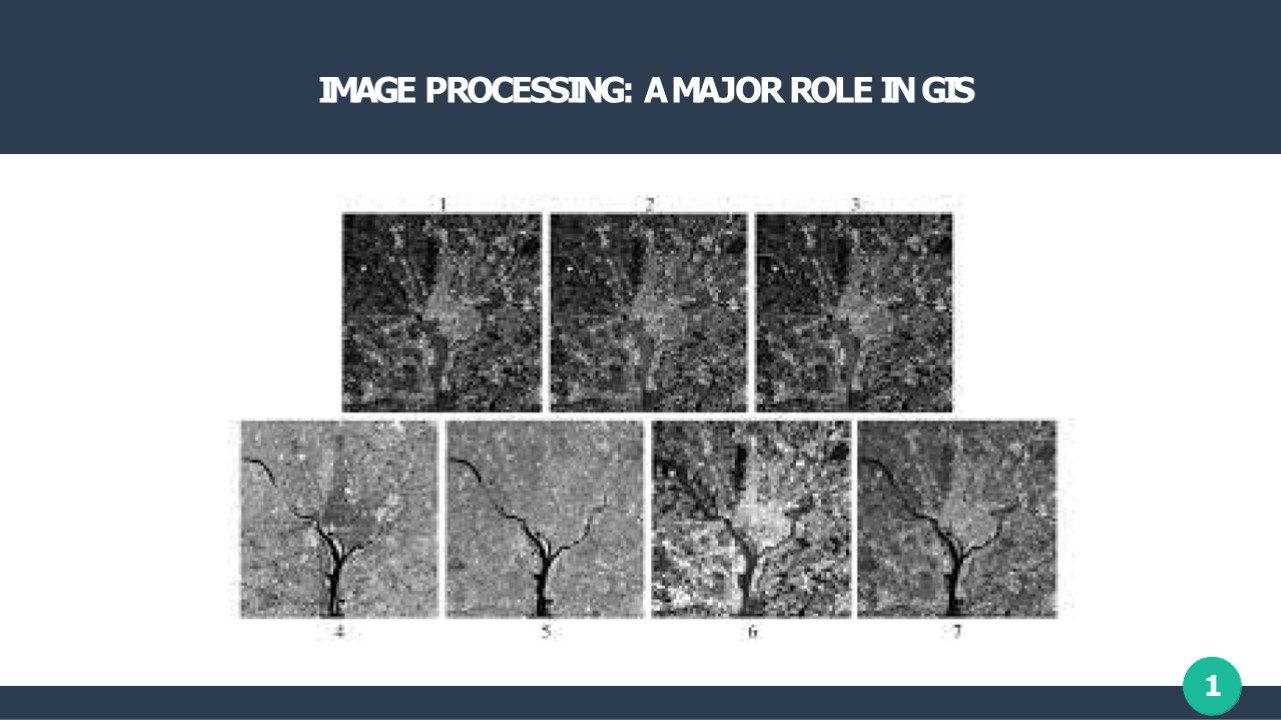IMAGE PROCESSING: A MAJOR ROLE IN GIS - PowerPoint PPT Presentation
Title:
IMAGE PROCESSING: A MAJOR ROLE IN GIS
Description:
Through the analysis of data collected by a device that is not in direct contact with the thing, region, or phenomenon being studied, remote sensing is the process of learning more about an object, phenomenon, or location – PowerPoint PPT presentation
Number of Views:4
Title: IMAGE PROCESSING: A MAJOR ROLE IN GIS
1
IMAGE PROCESSING A MAJOR ROLE IN GIS
2
Through the analysis of data collected by a
device that is not in direct contact with the
thing, region, or phenomenon being studied,
remote sensing is the process of learning more
about an object, phenomenon, or location. A
computer-assisted system for the collection,
archival, analysis, and presentation of
geographic data is a GIS based on remote
sensing. GIS enables the creation, upkeep, and
searching of electronic databases including data
typically shown on maps. A wide range of fields
value remote sensing data. To facilitate the
interpretation of remote sensing images, numerous
image processing and analysis techniques have
been created. Try to gather as much data as you
can from the images. The selection of particular
methods or algorithms to usage is determined by
the objectives of each specific project.
3
A computer-assisted system for the collection,
archival, analysis, and presentation of
geographic data is known as a Geographic
Information System (GIS). GIS enables the
creation, upkeep, and searching of electronic
databases including data typically shown on
maps. These databases are geographically
oriented, with their location on the surface of
the earth serving as the primary integrating
factor. In order to efficiently encode, save,
retrieve, overlay, correlate, alter, analyze,
query, and display land- related information,
this system consists of a number of computerized
tools and processes. They also make it easier to
choose and transfer data to analytical models
for particular applications that may evaluate how
options will affect the environment of choice.
4
An efficient digital map database connected to a
precise horizontal control survey framework
forms the basis of a strong GIS. The spatial data
is typically recorded in the form of digital
layers of maps that indicate topography, geology,
soil types, forest and flora, land use, the
availability of water resources, etc. It is
simple to create new themed maps by combining
multiple data layers in a computer. As a result,
a GIS has a database with numerous information
layers that can be used to change relationships
between the chosen items. GIS is able to produce
maps, integrate data, depict situations, resolve
challenging issues, offer compelling ideas, and
develop practical solutions.
5
Image restoration, image enhancement, image
classification, and image transformation are the
four fundamental processes that make up digital
image processing. In order to achieve the most
accurate portrayal of the earth's surface, image
restoration focuses on the calibration and
correction of photographs. The main focus of
image enhancement is on modifying images
to improve how they seem to the visual system.
Even with digital image processing, visual
inspection is a crucial component, and the
results of these methods can be rather
impressive.
6
In order to maximize the amount of information
that can be gleaned from remote sensing photos,
numerous image processing and analysis
techniques have been created. The objectives of
each individual project determine the specific
approaches or algorithms to be used. A digital
image may include the following components spatia
l, spectral, radiometric, and temporal
components.
7
CONCLUSION
A wide range of fields value remote sensing data.
This will still be the case and most likely get
worse as more operational systems deliver on
their promises of improved data availability. For
environmental scientists and planners, the
availability of this data and the software
required to evaluate it opens tremendous
possibilities, notably in the fields of land use
mapping and change detection, which were unheard
of just a few decades ago. Remotely sensed data
is easily compatible with raster GIS because of
its intrinsic raster nature































